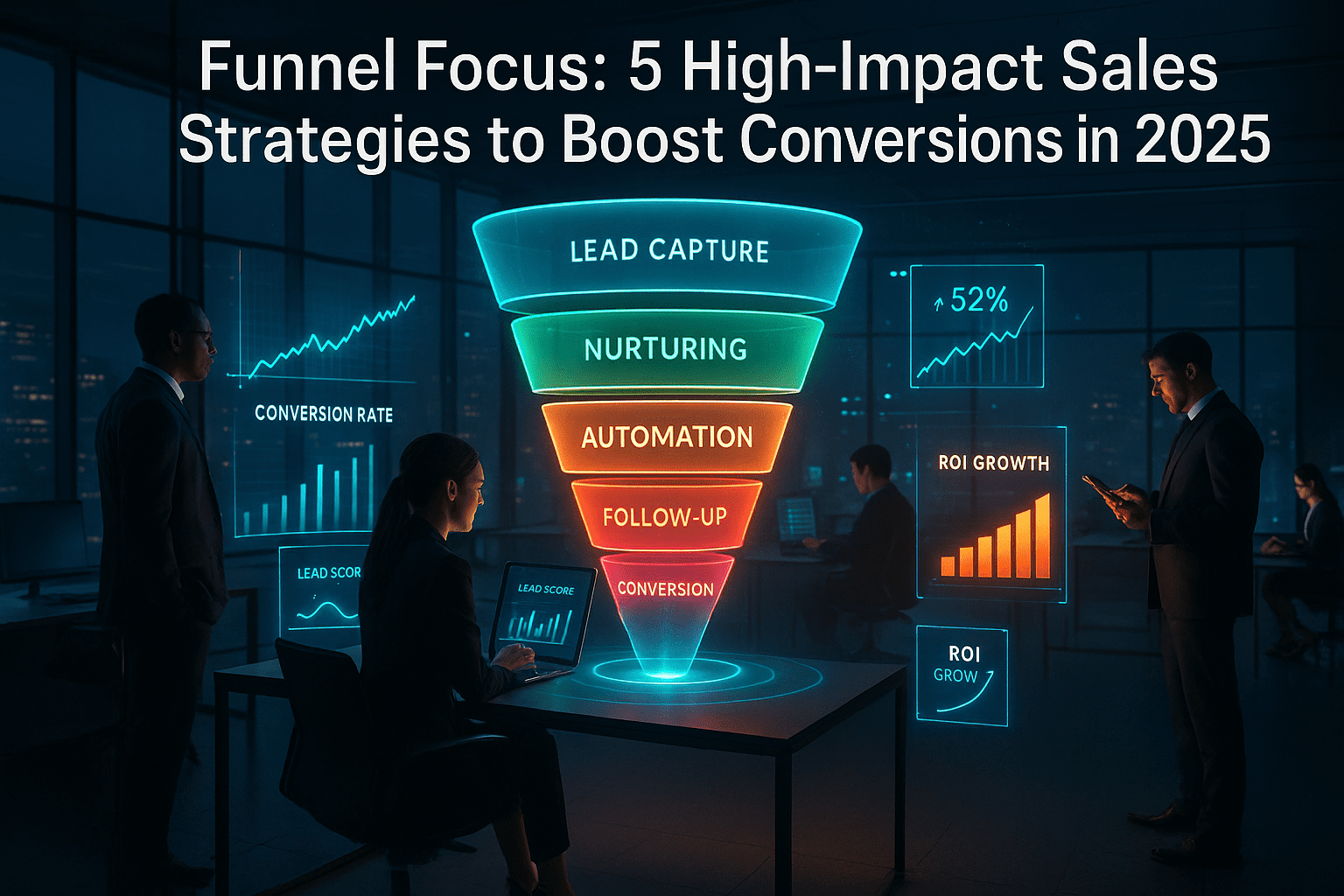
In 2025, a well-crafted sales funnel is the backbone of revenue growth. With 80% of new leads never turning into customers—often due to lack of nurture—businesses must build systems that proactively guide prospects from interest to conversion. Today, we’ll explore five actionable steps to optimize your sales process, increase deal size, and reduce acquisition costs.
1. Qualify Leads Early for Maximum Efficiency
Failing to qualify effectively wastes time and money. A staggering 80% of new leads never convert into sales—often because they’re never nurtured meaningfully.
- Define clear qualification criteria (e.g., budget, timing, need).
- Implement lead scoring in your CRM—assign points for behavior like email opens, site visits, downloads.
- Route only high-scoring leads to sales for personalized outreach; nurture the rest with automated sequences.
Why it matters: Focused follow-up on qualified leads improves your sales team’s productivity and boosts conversion potential.
2. Use Nurture Sequences to Increase Deal Sizes
Nurtured leads yield better outcomes—namely, 47% larger purchases compared to non-nurtured leads.
- Map your buyer journey and craft email sequences aligned with each stage.
- Mix valuable content (case studies, tips) with soft CTAs to build rapport.
- Add social proof—testimonials, results, or video demos—to reinforce value.
Why it matters: A thoughtful nurture strategy builds trust, increasing average deal value and brand loyalty.
3. Leverage Automation for Scalability and ROI
Sales automation isn’t optional—it’s essential. Automated lead nurture yields 320% higher revenue than non-automated campaigns.
- Segment audiences (e.g., warm leads, high-value prospects).
- Design triggered workflows—welcome series, abandoned cart follow-ups, or re-engagement flows.
- Monitor performance metrics (open rates, conversion to sale) and optimize regularly.
Why it matters: Automation frees time, maintains consistent outreach, and delivers significant returns.
4. Follow Up with Precision and Speed
Nearly 50% of small businesses fail to follow up after initial contact, missing vital revenue opportunities.
- Track leads through your CRM; set reminders for timely follow-up.
- Use multi-channel outreach—email, phone, LinkedIn—based on prospect preferences.
- Address objections in follow-ups with concise answers or testimonials.
Why it matters: Fast and thoughtful follow-up increases the odds of conversion—especially during critical decision windows.
5. Track and Optimize Key Sales Funnel Metrics
Data-driven adjustments separate high-performing pipelines from average ones. Here are critical metrics to track:
| Metric | Why It Matters |
|---|---|
| Lead-to-sale conversion rate | Benchmarks funnel efficiency |
| Average deal value | Measures growth impact from nurturing efforts |
| Time-to-close | Reveals bottlenecks in your funnel |
| Cost per lead (CPL) | Helps evaluate campaign ROI |
Companies excelling in lead nurturing generate 50% more sales-ready leads at 33% lower cost.
Why it matters: Monitoring these metrics ensures continuous improvement and a more cost-effective sales process.
Final Takeaway
In 2025, a robust sales strategy hinges on smart qualification, nurturing, automation, timely follow-ups, and metrics. With the right funnel, you’ll spend less chasing dead-end leads, close bigger deals, and lower acquisition costs.
Your next step: Audit your current funnel by mapping every stage (lead capture to close). Identify weak points—such as long follow-up delays or low conversion stages—and apply the strategies above. Consistent optimization will transform your funnel into a growth engine.
Start today—your optimized funnel powers tomorrow’s profit.


